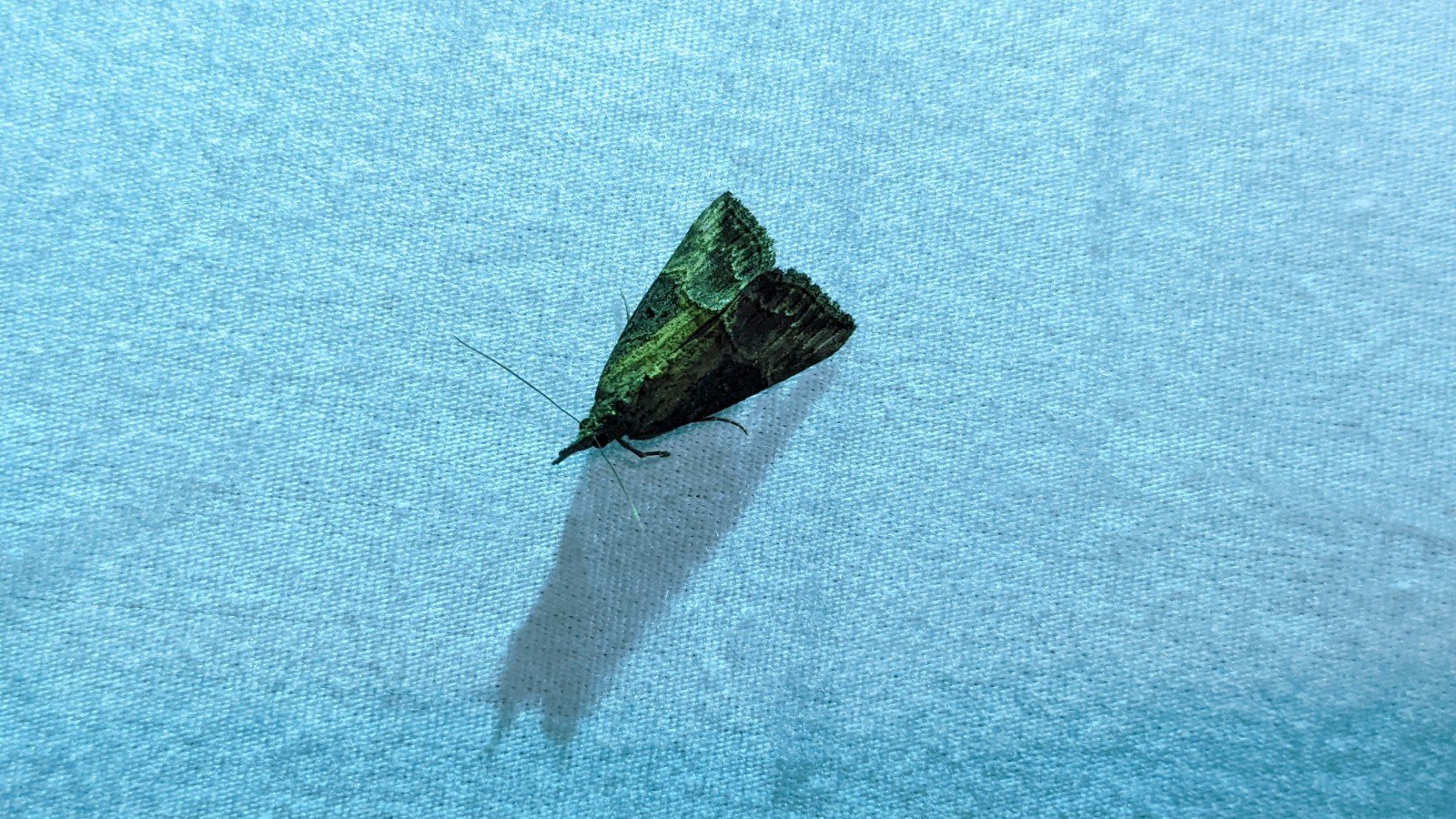This Summer I participated in the Moth Lighting at Climbers Run Nature Center, as part of a collaborative event of the Lancaster Conservancy and budding professional community- the Ecological Landscaping Guild of the Lower Susquehanna River Watershed. Keith Williams, Naturalist and Community Engagement Coordinator for the Lancaster Conservancy, and Ian Gardner, of Green Gardner Designs, facilitated the night’s public event.
Keith Williams (left) and Ian Gardner (right), facilitators of the Moth Lighting public event @ Climbers Run Nature Center- July 2022.
Using simply a white bed sheet and lighting (mimicking the moon’s glow), dozens of species were attracted to the staged observation space over the course of the night. Large Catalpa Sphinx Moths and more delicate Angle Wing Moths arrived in shifts, pausing calmly on the sheet as if they “had arrived”. Entomologists speculate that the glow of the staged light, resembles the glow of the moon, which is a moth’s navigation tool when in flight. Positive phototaxis, or the phenomenon of nocturnally active moths being attracted to light, allows naturalist to use the man-made light to lure them for ease in identifying the species.
A simple white bed sheet and hung lighting to set the stage for the night-flying moths @ Climbers Run Nature Center.
The man-made lighting illuminated at night.
Identifying the diversity of moths in a habitat (designed or in the semi-wild) is valuable information to gather, given that Lepidoptera (moths and butterflies) are the basis of an ecological food web. The richer the species in diversity and quantity, the stronger the resilience the space has in fueling a web of life.
Night-flying moths are often neglected in an ecological gardener’s observation and consideration when anecdotally assessing the biological health of their space, presumptive of the fact that you need to stay up after dark (I come by this honestly) in order to make that assessment. Possibly also the duller colored patterns of their camouflaged wings make for a less spectacular identification experience than when identifying colorful butterflies on one’s property. In either case, moth identification is a rarely explored world, a deep sea dive experience per say of our backyards and forests.
Identifying a Catalpa Sphinx Moth @ Climbers Run Nature Preserve
As the dark night hours drew on approaching 10:30, 11pm, the naturalist jokes started to brew and chuckles filled the forest air. Looking up the names of the moths as they flew into sight; ; Pawpaw Sphinx Moth, Catalpa Sphinx Moth, Common Oak Moth, etc. Maybe they too were a bit delirious in the depths of night when making these discoveries, lacking a bit of creativity. Although in a way, several of their matter of fact names alluded to their host plant, useful as a beginner moth identifier.
Catalpa Sphinx Moth caterpillars on their host plant in Lancaster County Central Park- July 2022.
The Catalpa Sphinx Moth was a particularly intriguing identification not only for their large stature compared to the other moths we witnessed, but to the serendipitous correlation I made in a recent discovery when hiking in Lancaster County Central Park, just under a week prior this event. As pictured above, dozens of hungry caterpillars were munching on a Catalpa tree. I snapped a quick picture, thought for a moment “these are definitely moth caterpillars”, and neglected to upload it on iNaturalist for suggested identification. Zoom forward to the late night epiphany at the Moth ID event- turns out they were Catalpa Sphinx caterpillars! It was a delight to witness them in these two distinct phases of their lifecycle!
Additional moth identification photos from the Moth Lighting @ Climbers Run Nature Center public event…
Do you love Lepidoptera and/or appreciate public environmental education events hosted by the Lancaster Conservancy, like this Moth Lighting event? Give the post some “Love”, share with a friend, and/or comment below!
















